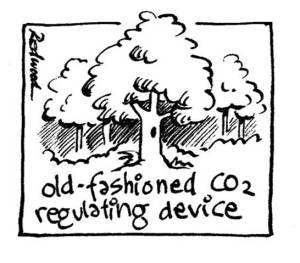autor Anton Zolotarjov
autor Anton Zolotarjov
autor Linda-Liisa Veromann-Jürgenson
autor Kersti Püssa
autor Anton Zolotarjov
autor Anton Zolotarjov
autor Linda-Liisa Veromann-Jürgenson
autor Kersti Püssa
The scientist of Estonian University of Life Sciences involved in a study demonstrating that drought-induced changes in forest composition amplify effects of climate variability on forest carbon gain
Healthy forests play a key role in global ecosystems as they contain much of the terrestrial biodiversity and act as a net sink for atmospheric carbon. As climate change affects the forests, so do the forests affect climate change. The species composition of forests is changing due to climate change-induced shifts in rainfall and temperature and this causes more dramatic alterations in forest productivity than climate effects alone, according to a collaborative study of scientists of University of Florida, Estonian University of Life Sciences and Princeton University published in Nature.
The result of the means that forests facing global change are already starting to look different, but more importantly, it means the ability of those forests to soak up carbon is being altered as well, which could in turn bring about further climate change.
The study was based on forests of eastern United States, but the results can be generalized worldwide to natural forests and multi-species moderately managed forest where species composition is not controlled. “The changes we documented are easily blurred by other disturbances, which is probably why nobody had previously documented them. Without a long-term dataset with millions of trees, we would have been unable to detect these changes” said Prof. Ülo Niinemets, the scientist involved from Estonian University of Life Sciences.
The team based their findings on systematic forest inventories of trees in the eastern U.S. from the 1980s to the 2000s. The team looked specifically at forest biomass, tree species composition, and climate variability. The researchers found that decades of changes in water deficit have reduced forest biomass, leading to an increase of abundance of tree species that are more tolerant to drought but slower-growing. This shift results in significant changes in forest species composition with their accompanying ecological effects and, moreover, affects the capacity of forests to store carbon.
Forests are affected by other human activities such as farming or logging, and many are in a stage of ecological succession with lower biomass compared to mature forests. This history of disturbance made the researchers’ analysis challenging. To solve this, researchers compared forests on the basis of their age. “We compared forests in the 1980s of a given age (for example, an 80-year-old forest) to forests of the same age in the 2000s,” said Niinemets. “In areas where the climate got wetter, our analysis showed increases in biomass over the two decades, whereas in the areas that got drier, there were decreases in biomass. When we look at the eastern U.S. as a whole, there was an overall trend towards a drier climate from the 1980s to the 2000s, and therefore the overall effect of climate over the two decades was to reduce forest biomass.”
Drought-tolerant tree species tend to allocate more carbon to fine roots and less to their leaves and woody parts that would sequester more carbon. Niinemets said that although they expected an increase in drought-tolerant tree abundance would prevent biomass losses triggered by water deficits, the opposite appears to be true. “Functional shifts amplified the effects of climate by making forest biomass more responsive to drying or wetting,” he said. “In hindsight, this makes sense, because drought-tolerant species tend to be slow growing. So, if drought causes a shift towards more drought-tolerant species, biomass will decline compared to forests dominated by fast-growing, drought-intolerant species.”
Overall, the study shows that forest biomass and tree species composition and their combined impact on carbon storage are affected by climatic variability on a sensitive and short timeline — just a few decades. “We are confident that our findings on climate-driven changes in species composition and resulting biological controls on forest productivity will stimulate further research into relationships between species composition, ecosystem function, and climate variability.”
Citation: Zhang, T., Niinemets, Ü., Sheffield, J., & Lichstein, J. W. (2018). Shifts in tree functional composition amplify the response of forest biomass to climate. Nature, DOI: 10.1038/nature26152 (link to full text)

Abstract:
Forests have a key role in global ecosystems, hosting much of the world’s terrestrial biodiversity and acting as a net sink for atmospheric carbon. These and other ecosystem services that are provided by forests may be sensitive to climate change as well as climate variability on shorter time scales (for example, annual to decadal). Previous studies have documented responses of forest ecosystems to climate change and climate variability, including drought-induced increases in tree mortality rates. However, relationships between forest biomass, tree species composition and climate variability have not been quantified across a large region using systematically sampled data. Here we use systematic forest inventories from the 1980s and 2000s across the eastern USA to show that forest biomass responds to decadal-scale changes in water deficit, and that this biomass response is amplified by concurrent changes in community-mean drought tolerance, a functionally important aspect of tree species composition. The amplification of the direct effects of water stress on biomass occurs because water stress tends to induce a shift in tree species composition towards species that are more tolerant to drought but are slower growing. These results demonstrate concurrent changes in forest species composition and biomass carbon storage across a large, systematically sampled region, and highlight the potential for climate-induced changes in forest ecosystems across the world, resulting from both direct effects of climate on forest biomass and indirect effects mediated by shifts in species composition.